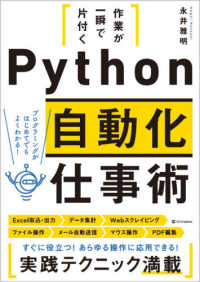- ホーム
- > 洋書
- > 英文書
- > Science / Mathematics
Full Description
Semiconductor device modelling has developed in recent years from being solely the domain of device physicists to span broader technological disciplines involved in device and electronic circuit design and develop ment.








